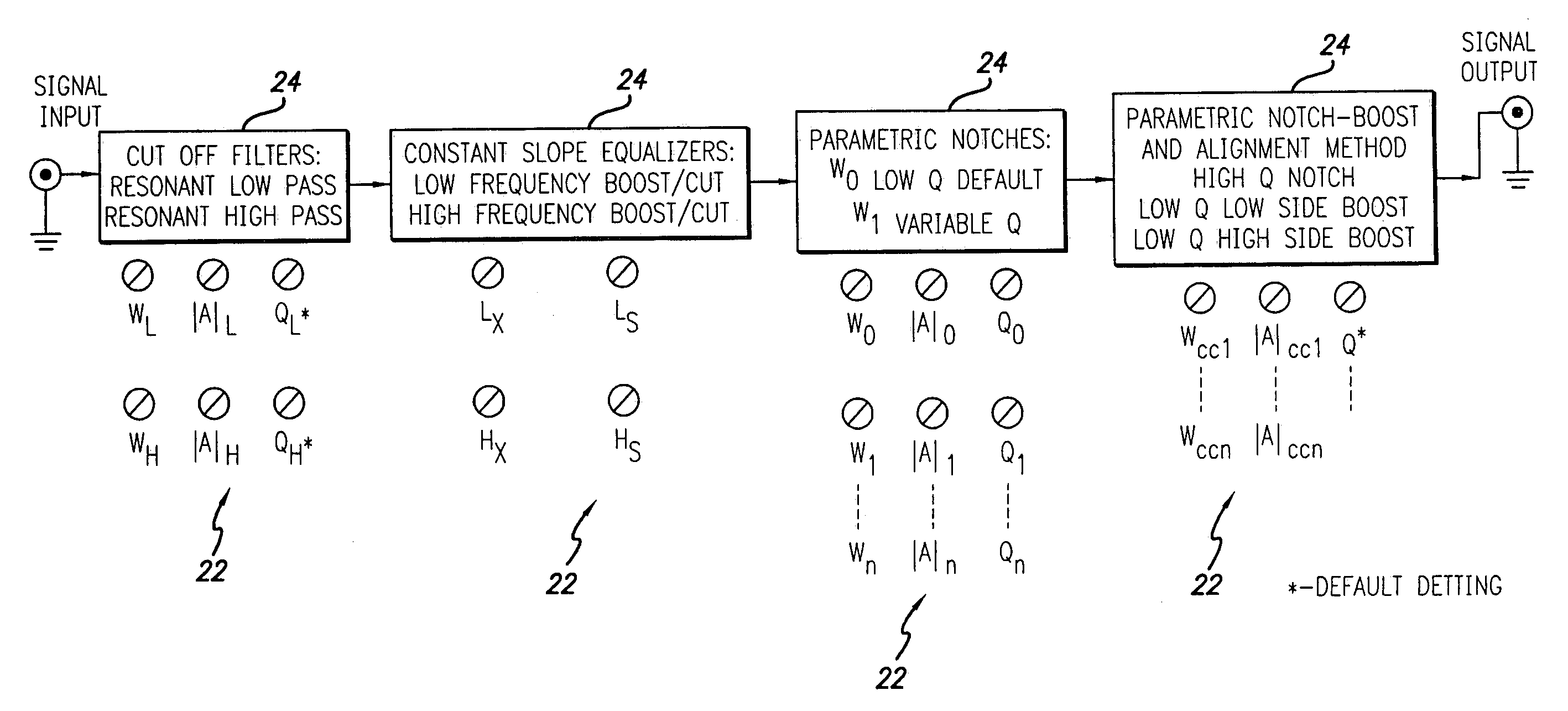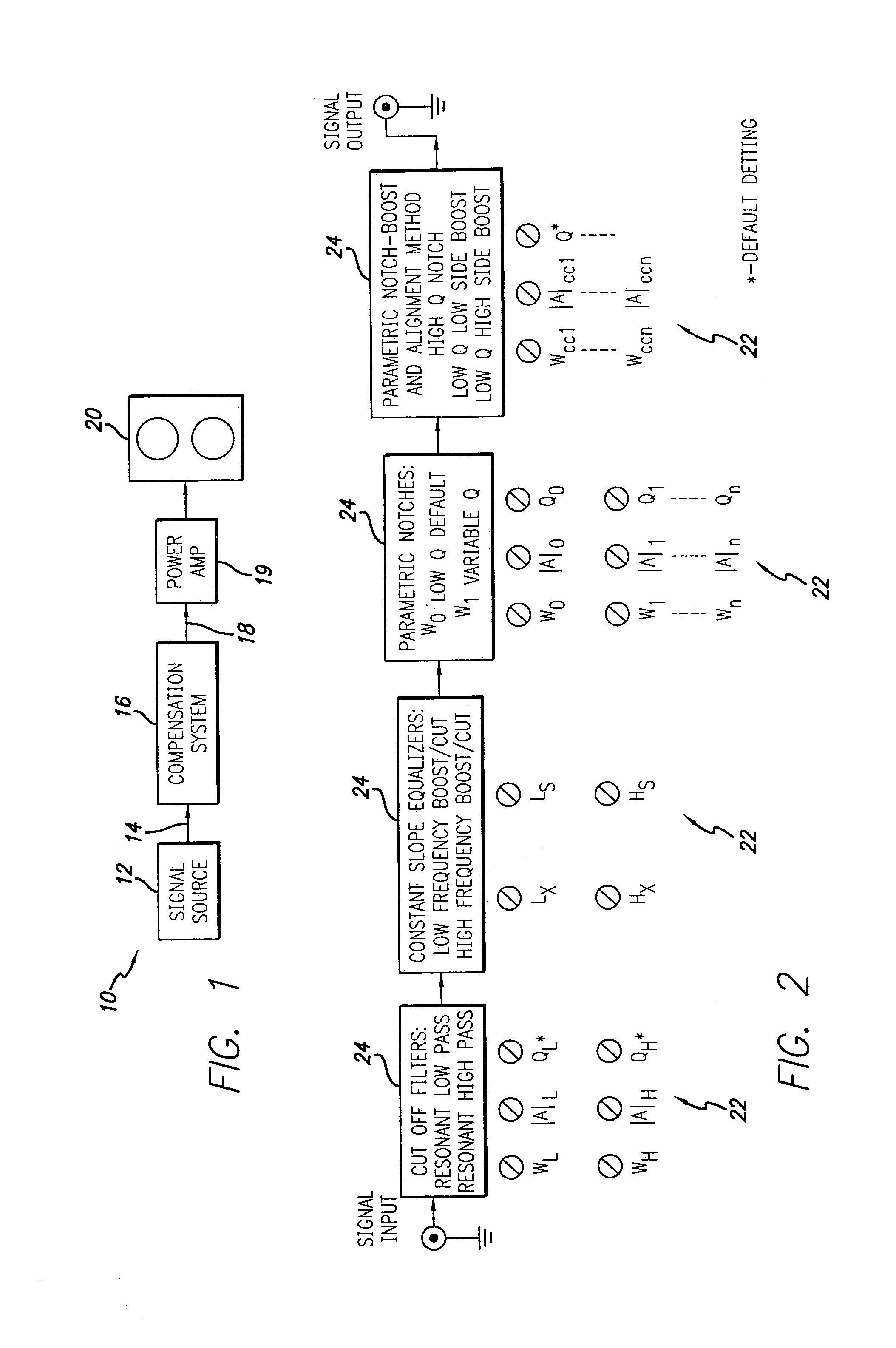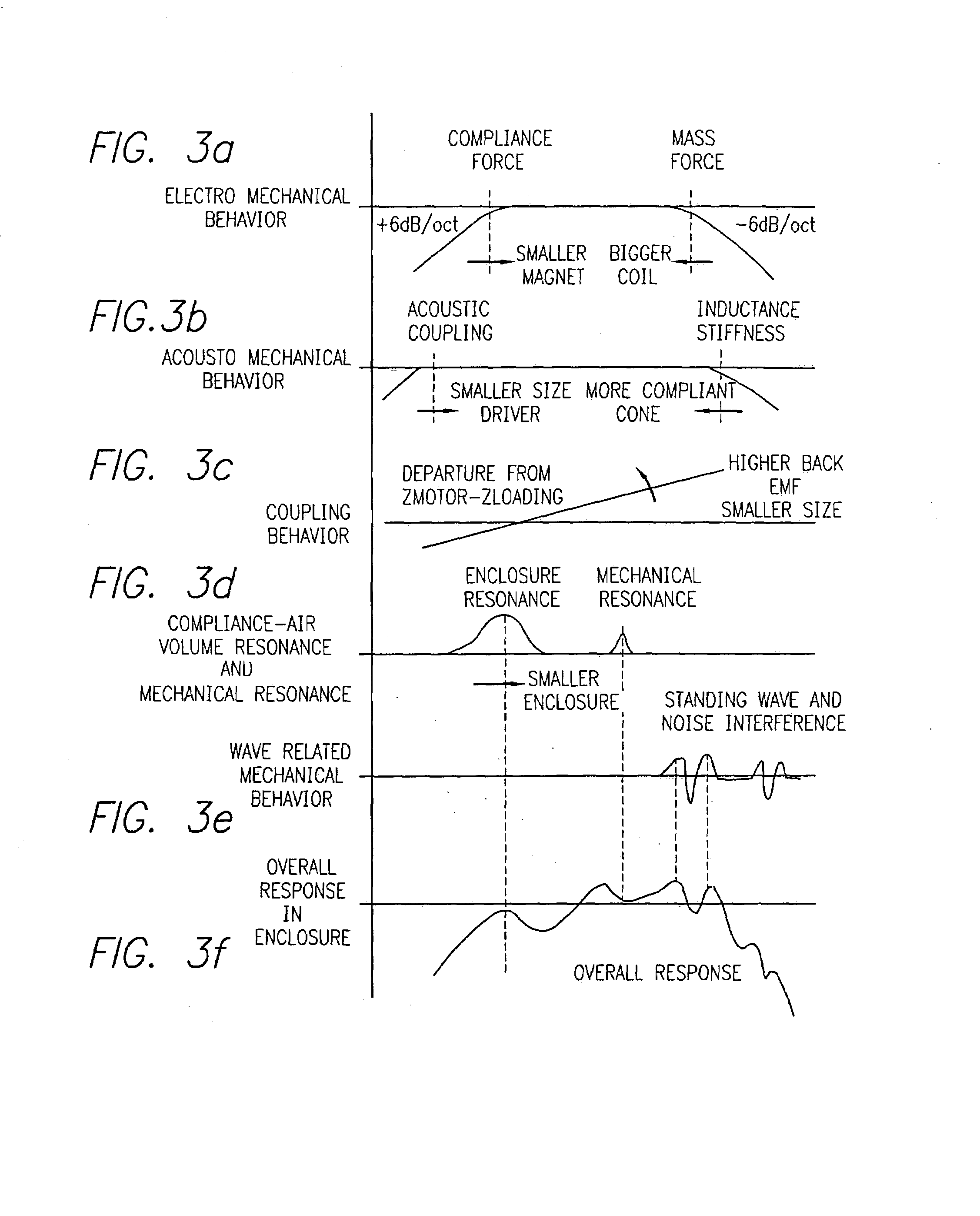Compensation system and method for sound reproduction
a sound reproduction and compensation system technology, applied in the direction of digital signal tone/bandwidth control, electrical apparatus, amplification control, etc., can solve the problems of mechanical, acoustic properties of loudspeakers that are often less than ideal, response anomalies, other coloration of sound, etc., to improve the frequency, time, phase and amplitude performance of the device, improve sound clarity, and improve the effect of sonic balan
- Summary
- Abstract
- Description
- Claims
- Application Information
AI Technical Summary
Benefits of technology
Problems solved by technology
Method used
Image
Examples
Embodiment Construction
[0054]The following description focuses on the application of the present invention to a loudspeaker system. The invention, however, is not limited to such applications and may be applied to other sonic transmission and reproduction devices such as those set forth at the end of the specification.
[0055]Referring now to the drawings, wherein like reference numerals denote like or corresponding parts throughout the drawing figures, and particularly to FIG. 1, there is shown a system 10 incorporating the present invention. The system 10 includes a signal source 12, for providing an electrical audio signal. The signal source may be, for example, a CD player. The output 14 from the signal source 12 is input to a compensation system 16 which employs detailed features and aspects of the present invention. The output 14 is processed by the compensation system 16 to produce a compensated electrical audio signal 18 which is fed to a power amplifier 19 and a loudspeaker 20.
[0056]With reference ...
PUM
 Login to View More
Login to View More Abstract
Description
Claims
Application Information
 Login to View More
Login to View More - R&D
- Intellectual Property
- Life Sciences
- Materials
- Tech Scout
- Unparalleled Data Quality
- Higher Quality Content
- 60% Fewer Hallucinations
Browse by: Latest US Patents, China's latest patents, Technical Efficacy Thesaurus, Application Domain, Technology Topic, Popular Technical Reports.
© 2025 PatSnap. All rights reserved.Legal|Privacy policy|Modern Slavery Act Transparency Statement|Sitemap|About US| Contact US: help@patsnap.com



